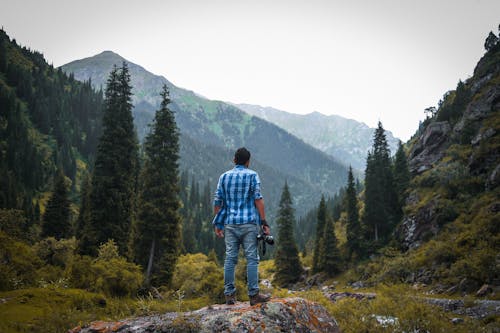How to Click a Great Candid Photo?
By Shalini M | Submitted On February 17, 2020
It is a bit hard to click a good candid photo. It is not about the photograph alone, but also the emotions captured with it.
To make it clear, candid photo means photos that were genuinely unplanned and unposed. Like the photo of a group gathering, beach trips, family activities, etc.
Here I am assuming that you are shooting using a DSLR. Some of the tips and tricks can be applied to smartphones as well, but it would be best with a DSLR. So let's get started.
1. Aperture Modes
Most of the DSLR out there in the market have something called aperture modes. Use them for candid photographs. Manual modes are too slow to capture a candid photo.
2. Use a zoom lens instead of a prime lens
The problem with candid photography is that it is fast changing. Within minutes you can go from a group photo to a cake photograph to another group photo. You don't have time to change lenses. So it is better to use a zoom lens instead of a prime lens.
3. Make use of ambient light and not flash
In candid photography, the photo scene changes very frequently. Whenever this happens, you should try to measure the quality of the light and then expose the camera accordingly.
4. AI Servo AF
Most DSLR has two autofocus modes. One is called Single Point AF-S and is the most widely used model. The other mode is called AI Servo AF, which is best for candid photographs. Remember on Nikon this mode is called Continuous AF-C.
5. Click lots of Photos
In photography the most common reason behind bad photos is hesitation. Do not hesitate to click photos. One more photo could mean capturing the best moment of the occasion. Moreover, in the case of candid photography, you don't know when the best moment would occur. You should not wait for the "perfect" shot. Instead, create one.
6. Click photos in burst mode
You can try shooting in Burst mode on Nikon or Drive mode on Canon. These modes allow you to click photos after photos in regular interval. This makes sure you do not miss that one "perfect shot". Once you let go the button, the snaps are stopped. This feature is a boon for a photographer working in a high-action shooting. Try it once and thank me later.2
7. Never put down your camera
I simply cannot tell you how important it is to hold the camera. In the interval of finding the camera, picking it up, exposing and composing it and then snapping the shot, the moment can be missed. A golden rule: "Always keep the camera in your hand".
8. Try to shoot in RAW Format
The JPG format is not for candid photography! If you are willing to post-process the photos, then you should use RAW format. This format contains much more information than a JPG format. Moreover, it is much easier to edit RAW than JPG.
So, guys, these were 8 useful tips that can make you the king of candid photography. If you are looking for the best Candid photographer in Delhi NCR we are here to help you.
Article Source: https://EzineArticles.com/expert/Shalini_M/2609777

